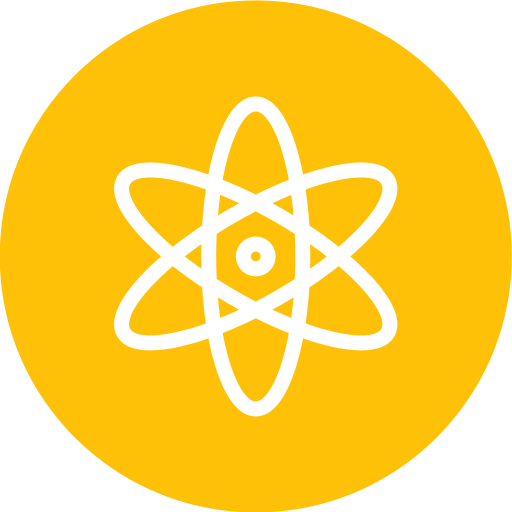React JS Installation in Windows Step by Step
Last updated 4th.Dec.2023
Want to know how to do react js installtion in windows pc. You are at the right place, this article will guide you through React JS Installation in Windows Step by Step –

About The Author
Sai Ram Soma Having 12+ years of IT experience in React JS & Native, JavaScript, Typescript. Working in a startup from day one. Accustomed to learning and keeping up with the current trend. Experience in developing feature rich web applications using React JS. Experience in developing mobile applications in Android, React Native.

Contents
What is React js?

React JS is a popular open-source JavaScript library that is widely used for building scalable and dynamic user interfaces or UI Components for web and mobile applications.
React was developed by Facebook and is now maintained by a community of developers.
It allows developers to create reusable UI components and manage complex application states with ease.
One of the key features of React is the use of a virtual DOM, which enables efficient updates to the UI without requiring a full page reload.
React also has a strong focus on component-based architecture, which allows developers to build complex UIs from small, reusable building blocks.
React’s popularity has led to the creation of a vast ecosystem of third-party libraries and tools, including React Router for handling client-side routing, Redux for managing state, and many more.
Overall, React’s flexibility, performance, and large community make it a top choice for building modern web applications.
Why is React JS Popular?
React JS has gained immense popularity among developers due to its numerous benefits and features. Here are some of the reasons why React JS is so popular:
- Component-Based Architecture: React JS’s component-based architecture allows developers to create reusable UI components and manage complex application states with ease. This results in faster development times and easier maintenance.
- Virtual DOM: React JS uses a virtual DOM, which enables efficient updates to the UI without requiring a full page reload. This results in faster rendering and better performance.
- Large Community: React JS has a large and active community, which means that developers can easily find help, support, and resources online.
- Ecosystem of Tools and Libraries: React JS has a vast ecosystem of third-party libraries and tools, including React Router for handling client-side routing, Redux for managing state, and many more.
- Performance: React JS’s performance is one of its key strengths. Its use of a virtual DOM, combined with its component-based architecture, results in fast and efficient rendering.
Who uses React JS?
React JS is used by many large companies and organizations, including Facebook, Instagram, Netflix, Airbnb, and many more. It is also used by startups and small businesses due to its ease of use and flexibility.
React JS is suitable for a wide range of applications, from simple websites to complex single-page applications and mobile apps.
React JS is also used by many open-source projects, including React Native and Hyperapp. This is because it’s easy to learn and provides a solid foundation for building any kind of application.
In addition, Facebook provides a large number of open-source tools and utilities for React JS developers. These include React Native, an alternative to building mobile apps with native languages like Objective-C or Swift.
Prerequisite for React JS Installation in Windows
Here are the requirements of your system for React JS Installation in Windows Step by Step : –
- Install the latest version of Windows 10
- 4 GB of minimum RAM or higher
- 10 GB available space on the hard disk
- hard disk free space should be 10GD ideally
- Internet browser
- An active internet connection with decent speed
- There should be at least one installed code editor to test
npx create-react-app my-app
What do you need to install React JS on Windows?
To install React on Windows machine, you will need to have the following:
- Node.js: React JS is built using Node.js, so you will need to install the latest version of Node.js on your Windows computer. You can download the Windows Installer from the official Node.js website and follow the instructions to install it.
- npm: npm is the package manager for Node.js and is used to install React JS and its dependencies. npm is included with Node.js, so you don’t need to install it separately.
- Text Editor: You’ll need a text editor to write and edit your React code. There are many text editors available for Windows, including Visual Studio Code, Sublime Text, and Atom.
Once you have Node.js installed, you can open your command prompt or terminal and use the following command to install React JS and its dependencies:
npm install -g create-react-app
This will install create-react-app globally on your machine, which is a tool used to quickly set up a new React project. Once the installation is complete, you can use the following command to create a new React project:
create-react-app my-app
This will create a new React project named my-app in the current directory. You can then use your text editor to open the project and start writing React code.
In summary, for React JS installation in Windows machine, you need to install Node.js, which includes npm, and then use npm to install create-react-app. Once installed, you can use create-react-app to quickly set up a new React project and start writing code.
How to Check if React installed in Windows?
To verify if React is installed on your Windows system, you can follow these simple steps:
- Open the Command Prompt (CMD)
Press theWindows + Rkeys, typecmd, and hit Enter. This will open the Command Prompt window. - Navigate to Your Project Directory
If you are working on a React project, navigate to its folder by using thecdcommand. For example, if your project is in a folder namedmy-react-app, type:
cd my-react-app Check for React in the Node Modules
Type the following command to see if React is listed as a dependency in your project:
npm list react If React is installed, you’ll see its version number displayed in the output.
- Alternative Method: Check the Package.json File
Open your project folder and locate thepackage.jsonfile. Look for a section called “dependencies.” If React is listed there, it means React is installed for that project.
Tip:
If React is not installed, you can install it using the following command:
ct
npm install react Which operating systems are compatible with React JS?
ReactJS is a JavaScript library that is used for building user interfaces. It can be used on a variety of operating systems, including Windows, macOS, and Linux. Since ReactJS is a JavaScript library, it is compatible with any operating system that supports JavaScript.
ReactJS can be used to build web applications that run on a server, which means it can be used on any operating system that supports web servers. Additionally, ReactJS can be used to build mobile applications using React Native, which is compatible with both iOS and Android operating systems.
Developers can use a wide range of text editors and integrated development environments (IDEs) to write ReactJS code on different operating systems. Some popular text editors and IDEs that support ReactJS include Visual Studio Code, Atom, Sublime Text, WebStorm, and more.
ReactJS is compatible with a wide range of operating systems, as long as the operating system supports JavaScript and web servers if used for building web applications, and React Native if used for building mobile applications.
What is Node.js?
Node.js is an open-source, cross-platform runtime environment that executes JavaScript code outside of a web browser and provides two key benefits: event driven I/O and nonblocking IO!
Node.js allows developers to use JavaScript on the server side, making it possible to create scalable and high-performance applications that can be easily built using modules provided by Node.
Node.js is a highly flexible platform that can be used for everything from real-time chat applications to web servers, command line tools, and APIs. It provides developers with the ability to handle large amounts of data in real time, in other words it’s super fast!
One of the key benefits of Node.js is its package manager, npm (Node Package Manager). npm provides access to a vast ecosystem of open-source packages and modules, making it easy for developers to find and integrate reusable code into their applications.
How to install Node.js in Windows?
To install Node.js on a Windows system, please follow these steps:
- Go to the official Node.js website (https://nodejs.org/en/download/) and download the Windows installer (.msi) for the latest version of Node.js.
- Once the download is complete, double-click on the downloaded file to run the installer.
- Follow the instructions provided in the installer to complete the installation process. You can choose the default settings or customize the installation options as per your requirements.
- Once the installation is complete, open the command prompt by pressing the Windows key + R and typing “cmd” in the Run dialog box.
- In the command prompt, type “node -v” and press Enter to verify that Node.js has been installed successfully. This command will display the version of Node.js currently installed on your system.
You can now start building server-side applications using Node.js and its rich set of libraries and modules.
Verify Node.js Installation:
After installing Node.js, it’s essential to verify its successful installation by checking the installed versions of Node.js and npm.
Open a command prompt or terminal and run the commands node -v and npm -v. These commands display the installed versions of Node.js and npm, respectively.
You’ll see version numbers in the output if the installation was successful. This verification step ensures that Node.js and npm are accessible from the command line, allowing you to confidently proceed into the React development environment setup.
If any issues arise, revisiting the installation steps or consulting the Node.js documentation can help resolve them.
Understanding Project Structure:
Understanding the project structure is crucial for effective React development. When you create a new React app using Create React App, it generates a standard project structure.
The “src” directory contains your source code, the “public” directory holds static assets, and “node_modules” stores project dependencies. Becoming familiar with this structure enables you to organize and locate your files efficiently.
As you delve deeper into React development, understanding the role of each directory becomes essential for managing and scaling your projects effectively.
Exploring the src Directory:
The “src” directory is where the main source code of your React application resides. Key files include “index.js,” the entry point of your application, and “App.js,” the default React component.
Exploring the “src” directory allows you to understand the initial structure of your application, modify existing components, and add new ones as needed. This exploration is crucial for customizing your React app to meet specific requirements, as you’ll be working extensively within the “src” directory during the development process.
Making Changes and Hot Reloading:
One of the advantages of React development is hot reloading, a feature provided by the development server. As you make changes to your React code, the development server automatically reloads your application, reflecting the modifications in real-time.
This not only speeds up the development process but also provides an instant preview of your changes. The ability to see the impact of code edits without manually refreshing the page enhances productivity and allows for a smoother development experience.
Understanding Components and JSX:
React’s core concept revolves around components—modular, reusable pieces of code. JSX, a syntax extension for JavaScript, facilitates the creation of these components by allowing you to write HTML-like code within your JavaScript files.
Understanding components and JSX is fundamental to React development. Components encapsulate specific functionality and can be composed to build complex user interfaces.
JSX, with its familiar HTML-like syntax, simplifies the process of defining and visualizing the structure of your React components, making it an integral part of the React development workflow.
Installing Additional Packages:
To enhance the functionality of your React app, you might need additional packages or libraries. The “npm install” command allows you to install these packages effortlessly. For example, running npm install axios installs the Axios library, a popular choice for making HTTP requests in React applications.
Adjust the package name according to your project’s requirements. Installing additional packages is a common practice in React development, enabling you to leverage existing solutions and streamline the implementation of various features in your application.
Building and Deploying Your React App:
Before deploying your React app, creating a production-ready build is essential. The command npm run build generates an optimized and minified version of your application in the “build” directory.
This production build is well-suited for deployment on web servers or cloud platforms. Understanding the build process is crucial for preparing your React app for production, ensuring optimal performance and reduced file sizes.
Once the build process is complete, you can deploy the contents of the “build” directory to a hosting service of your choice, making your React app accessible to users.
What is npm?
npm (Node Package Manager) is a package manager for Node.js, which is used to manage dependencies and packages for Node.js applications. It provides a repository of over a million packages of reusable code that can be easily integrated into Node.js applications.
Npm, or Node Package Manager, is a tool for installing and sharing reusable code packages in the form of node libraries.Developers can search for packages on the npm website and easily install them using the npm command-line interface.
npm also allows developers to create their own packages and publish them to the npm registry, making it easy for other developers to use their code. This encourages collaboration and sharing of code within the Node.js community.
One of the key features of npm is its package-lock.json file, which ensures that each installation of a package has the same dependencies and versions. This helps to avoid conflicts and ensures that the application runs consistently across different environments.
It provides a vast repository of open-source packages, enables easy installation and updating of packages, and facilitates collaboration within the Node.js community.
How to install npm in Windows?
npm (Node Package Manager) is included with Node.js, so if you have Node installed, npm comes automatically too. However if you need to update or reinstall it for any reason, follow these steps:
- Download the latest version of Node.js from the official website (https://nodejs.org/en/download/) and run the installer.
- During the installation process, make sure to select the option to include npm in the installation.
- Once the installation is complete, open the command prompt by pressing the Windows key + R and typing “cmd” in the Run dialog box.
- In the command prompt, type “npm -v” and press Enter to verify that npm has been installed successfully. This command will display the version of npm currently installed on your system.
- If you need to update npm to the latest version, type “npm install -g npm” in the command prompt and press Enter. This command will install the latest version of npm globally on your system.
Which code editor is recommended for React development on windows?
There are many code editors available for React development on windows, but some of the most popular and recommended ones are:
- Visual Studio Code: Visual Studio Code is a free and open-source code editor that has become popular for React JS development thanks to IntelliSense, debugging, and Git integration.
- Sublime Text: Sublime Text is a code editor that offers users high performance and low resource consumption. It’s popular among developers for its speed, simplicity and vast library of plugins/packages.
- Atom: Atom is another popular code editor that is highly customizable and extensible. It has a robust ecosystem of plugins and packages that can be used to enhance its features for React JS development.
- WebStorm: WebStorm is a commercial IDE (Integrated Development Environment) that is specifically designed for JavaScript development. It provides advanced features such as code refactoring, debugging, and testing, which make it a great choice for building complex React applications.
How to install Visual Studio Code?
To download and install Visual Studio Code, follow these steps:
- Go to the official Visual Studio Code website (code.visualstudio.com) and click on the “Download for Windows” button.
- Once the download is complete, run the installer by double-clicking on the downloaded file.
- In the installation wizard, select the installation location and choose any additional tasks you want the installer to perform.
- Click on the “Install” button to start the installation process.
- Once the installation is complete, launch Visual Studio Code by double-clicking on its icon on the desktop or from the Start menu.
Visual Code Studio is now installed, so you can begin writing and debugging code for various programming languages, including JavaScript.
Setting up a React JS project with Visual Studio Code?
To set up a React JS project with Visual Studio Code, follow the below steps:
- Install Node.js: React JS requires Node.js to be installed on your computer. If you don’t have it installed already, you can download and install it from the official website (https://nodejs.org/en/download/).
- Create a new React project: Open the command prompt or terminal and navigate to the directory where you want to create your new React project. Then, run the following command to create a new React project:
npx create-react-app my-app
Replace “my-app” with the name of your project.
3. Open the project in Visual Studio Code: Once the project is created, open it in Visual Studio Code by navigating to the project directory in the terminal and running the following command:
4. Run the project: To run the React project, open a new terminal in Visual Studio Code and navigate to the project directory. Then, run the following command:
npm start
This will start the development server and open the React app in your default browser.
How to install React JS using npm?
To install React JS using npm, follow these steps:
- Install Node.js: React JS requires Node.js to be installed on your computer. If you don’t have it installed already, you can download and install it from the official website (https://nodejs.org/en/download/).
- Create a new React project: Open the command prompt or terminal and navigate to the directory where you want to create your new React project. Then, run the following command to create a new React project:
npx create-react-app my-app
Replace “my-app” with the name of your project.
3. Install React JS: Once the project is created, navigate to the project directory in the terminal and run the following command to install React JS:
npm install react
This will install React JS and its dependencies in your project.
4. Import React: To use React in your project, you need to import it into your JavaScript file. Add the following code at the top of your file:
import React from ‘react
Start using React: You can now start using React in your project. For example, you can create a new component by defining a function or a class that returns JSX code.
How to Check if React JS is properly installed?
To check whether you’ve installed React JS correctly or not, follow the below steps:
- Open your project in a code editor like Visual Studio Code.
- Navigate to the root directory of your project.
- Open the file src/index.js.
- Check if the following code is present at the top of the file:
import React from ‘react’; import ReactDOM from ‘react-dom’;
This code imports the necessary React libraries into your project.
5. Check if the following code is present in the ReactDOM.render() method:
6. Save the file and run your app by opening the terminal in your code editor and typing:
npm start
This will start a development server and open your app in a web browser.
7. Check if the app is working properly by looking for the React logo on the page. If you see the React logo, it means that React JS is properly installed and working on your project.
8.You can also check the console for any errors or warnings that may indicate issues with your React installation.
How to start a React JS development server?
To start a React JS development server, follow the below steps:
- Open your project in a code editor like Visual Studio Code.
- Navigate to the root directory of your project.
- Open the terminal in your code editor.
- Type the following command in the terminal:
npm start
Press Enter to execute the command.
5. This will start a development server and open your React app in a web browser.
6. As you make changes to your code, the development server will automatically reload the app in the browser, allowing you to see the changes in real-time.
7. You can stop the development server at any time by pressing Ctrl + C in the terminal.
Common issues that arise during React JS installation in Windows?
While installing React JS on Windows, you may encounter the following common issues:
- Node.js is not installed: React JS requires Node.js to be installed on your computer. If Node.js is not installed, you may encounter errors during installation. Make sure you have Node.js installed and try installing React JS again.
- Incorrect Node.js version: React JS requires a specific version of Node.js to be installed. If you have a different version installed, you may encounter errors during installation. Check the React JS documentation for the required Node.js version and install it before trying to install React JS.
- Permission issues: If you do not have the necessary permissions to install packages globally, you may encounter errors during installation. Try running the installation command with administrator privileges by right-clicking on the command prompt and selecting “Run as administrator”.
- Proxy issues: If you are behind a firewall or using a proxy server, you may encounter errors during installation. You may need to configure your proxy settings or contact your network administrator to allow the necessary connections.
- Outdated npm version: If you have an outdated version of npm installed, you may encounter errors during installation. Try updating npm to the latest version using the following command:
npm install -g npm
6. Missing dependencies: React JS requires certain dependencies to be installed before it can be installed. Make sure you have all the necessary dependencies installed before trying to install React JS.
7. Incorrect installation command: Make sure you are using the correct installation command for your operating system and follow the instructions in the React JS documentation carefully.
If you address these common issues when installing React JS on your Windows machine, you will be able to successfully build your React app.
Conclusion
In conclusion, setting up React JS installation in Windows is a straightforward process with just a few steps. With the right system requirements and installation instructions, developers can create applications using React JS without any hassle.
Additionally, we discussed common issues that arise during installation, such as incorrect Node.js version, permission issues, proxy issues, outdated npm version, missing dependencies, and incorrect installation commands.
By understanding these topics, you can confidently start building your React app and troubleshoot any issues that arise during the development process.
With React JS being a widely used and popular JavaScript library for building user interfaces, it’s worth investing time and effort into learning how to install and use it in Windows. By doing so, developers can take advantage of React JS’s powerful features and capabilities to create dynamic and engaging web applications.
FAQ's of React JS Installation in Windows
React js Installation in Windows
React requires a recent version of Node.JS and npm (Node Package Manager) to be installed on the system.
Open the Command Prompt and run the command node -v. If Node.js is installed, it will display the version number.
You can download the installer from the official Node.Js website and run it to all install Node.Js on your system.
Open the Command Prompt and run command npm -v. If npm is installed, it will display the version number.
Open the Command Prompt and run the command npx create react app my app, where “my-app” is the name of your project.
Navigate to the Project folder in the command prompt and run the command npm start. This will start a development server and open the application in your default web browser.
Navigate to the project folder in the command Prompt and run the command npm run build. This will create a procution-ready version of the application in the “build” folder.
Follow these simple steps to create a React app:
Install Node.js
Download and install Node.js from nodejs.org. It includes npm, which is required to create a React app.Open Command Prompt
Launch the Command Prompt (CMD) or terminal on your computer.Use Create React App Command
Run the following command to generate a new React application:npx create-react-app my-appReplace
my-appwith your desired project name.Navigate to Your Project Folder
Move into your project directory using:cd my-appStart the Development Server
Launch your React app with:npm startThis will open the app in your default browser at
http://localhost:3000.
Note: Ensure you have an active internet connection during installation to download dependencies.
Now you’re ready to start building your React application!
Navigate to the project folder in the Command Prompt and run the command npm update react-dom.
Check the error messages displayed in the Command Prompt and Search for Solutions online. Also, check if Node.js and npm are installed correctly and at the latest version.
No React JS only requires Node.Js and npm to be installed. However, you may need to install additional libraries or tools depending on the specific requirements of your project. React JS Installation in windows Step by Step.
Thanks for reading React js Installation in Windows Step step Article Hope this helps you.



